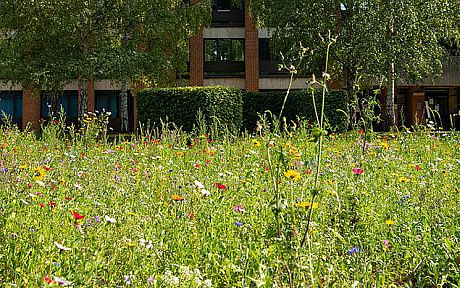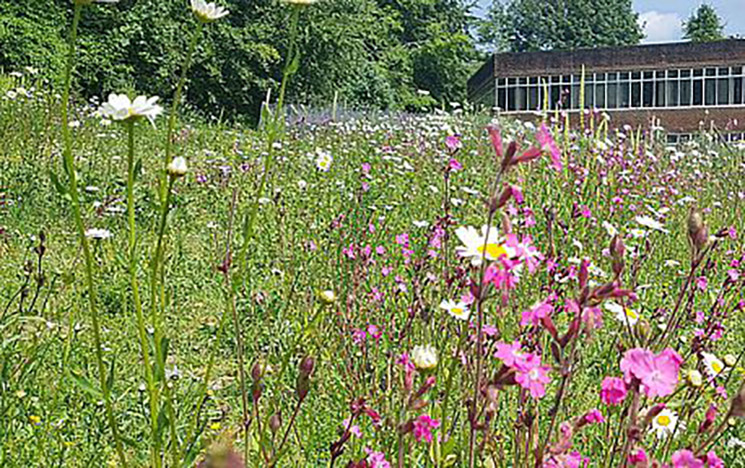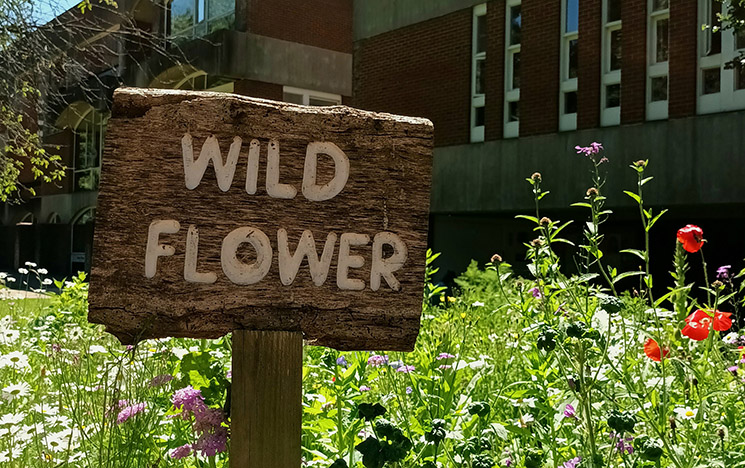Biodiversity at Sussex
Join the Sussex community in realising our collective vision to become the most biodiverse university in the UK.
 A biodiversity policy based on your feedback
A biodiversity policy based on your feedback
Within our updated Biodiversity Strategy and Biodiversity Policy, we have set two key objectives. These are:
- achieve a biodiversity net gain
- increase the percentage of the University of Sussex campus set aside for nature from the 2022 baseline of 38% to 42% by December 2027.
Read more about this commitment in the University’s updated Biodiversity Strategy and Biodiversity Policy [PDF, 1.36MB], which sets out our vision to become the UK’s most biodiverse campus.
How we’ve shaped our biodiversity plans
In November 2021, we commissioned a two-day biodiversity survey of the full campus site and a desk-based data search of the area 2km from the University boundaries in all directions. This established the University’s Baseline Biological Value (November 2021) and provided recommendations for nature and/or biodiversity enhancements, including suggested timelines and budgets. See a summary of the methodology and baseline results [PDF 2.1MB].
In March 2022, we started a Big Biodiversity Conversation among the Sussex community, to discuss ways to achieve a biodiversity net gain on campus. The first stage of the conversation resulted in five biodiversity projects, which were suggested, selected, and led by our community. Read about our practical biodiversity projects and get involved.
The second stage centered around a consultation which launched in December 2022 and asked the Sussex community how much land we should set aside for nature. ‘Land set aside for nature’ refers to areas of land that are either not managed or are managed at a low level to encourage nature to develop.
We heard from students and staff from across the university, who told us what they’d like to see on campus, how they currently use areas of campus land, and which areas could or could not be suitable to set aside for nature.
Based on the consultation, the University has committed to increase the percentage of campus biodiversity from the 2022 baseline of 38% to 42% by December 2027. This figure sees the University far outstrip the UK government’s 2020 commitment to manage 30% of UK land for nature by 2030. The University may go further in future.
View an indicative land use map where campus land set aside for nature is increased to 42%.
The University also committed to actively identify, monitor, and protect any IUCN Red Listed3 species categorised as Vulnerable, Endangered, or Critically Endangered with habitats on the Sussex campus and began undertaking regular monitoring surveys to enable this in Spring 2023.
Read about the Big Biodiversity Conversation in more detail.
Nature Positive University Pledge
In June 2023 the University made a Nature Positive University Pledge, joining other leading universities in the world, in making a commitment to start a nature positive journey, incorporating a biodiversity baseline, targets, actions and annual reporting.
Why biodiversity is important to the University
Our unique location in the Sussex South Downs National Park and UNESCO biosphere means we have both an opportunity and a responsibility to make our campus as biodiverse as possible.
The National Academy of Sciences has confirmed that we are currently in the sixth mass extinction as a result of the loss of biodiversity. So, we are working hard to achieve a biodiversity net gain.
While we already have passive rewilding zones and low management wildflower-rich areas, our goal of being the most biodiverse campus in the UK means we must do more.
You can read more about our Biodiversity Strategy and Biodiversity Policy [PDF, 1.36MB] and about our environmental sustainability goals in our Sustainability Strategy.

